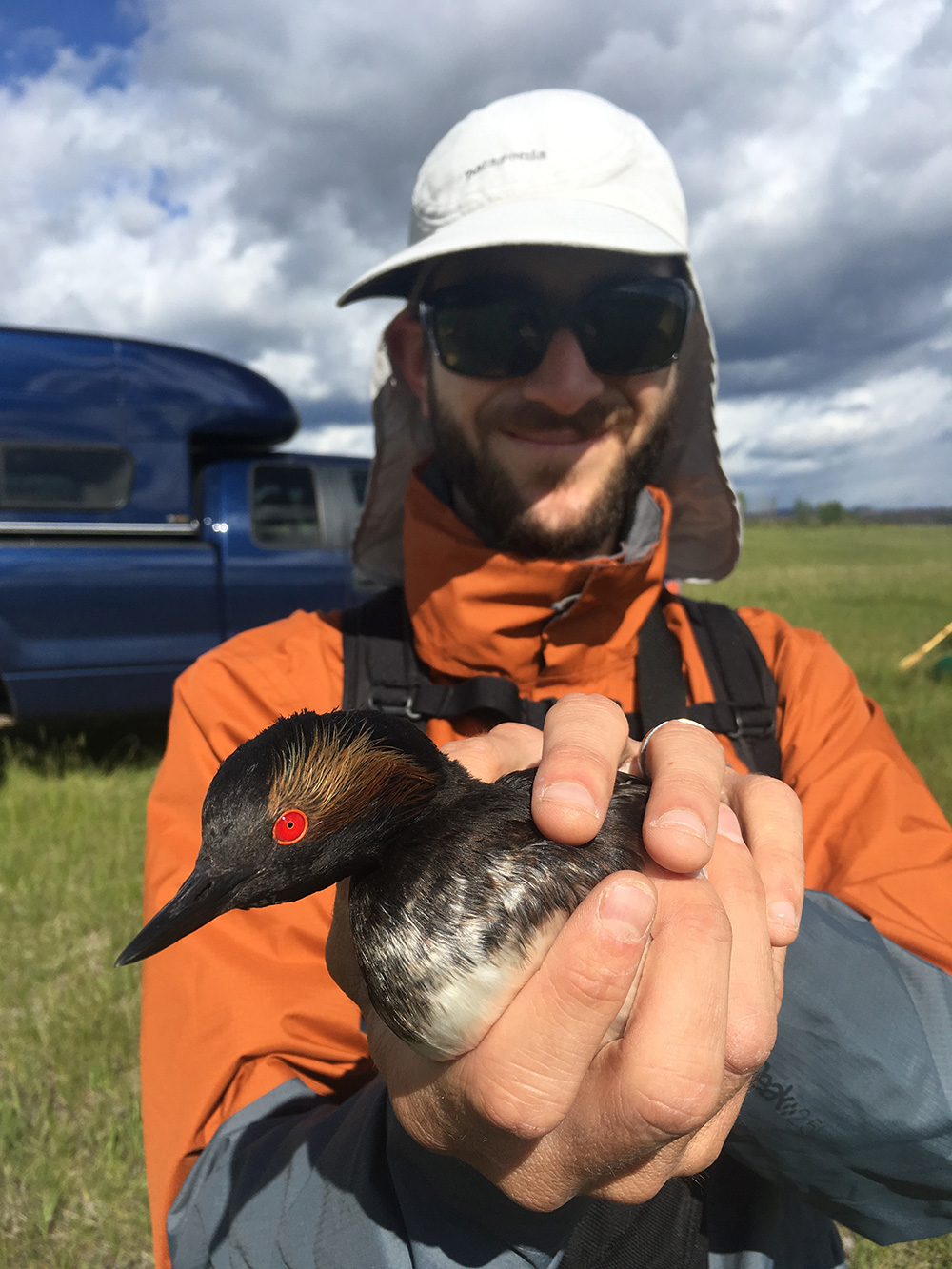

They’re not an endangered species, they’re not an invasive species, and they’re not a mascot for a sports team—according to a recent paper these are indicators that we shouldn’t expect Eared Grebes to start trending on Google anytime soon. In fact, a paper published in the National Academy of Sciences journal identified grebes as one of the least-popular bird groups in the United States.
I learned this not-so-fun fact while I was in Riske Creek, British Columbia, capturing Eared Grebes with Dr. Sean Boyd and his colleagues from Environment and Climate Change Canada (ECCC). While cradling a little one-pound grebe in my hands, the bird patiently waiting to be released, I felt baffled about why such a cool and unique bird was not more loved.
Eared Grebe aerial photo surveys at Mono Lake have been conducted almost every year since 1996, and the Mono Lake Committee has coordinated them on behalf of Dr. Boyd since 2008. The surveys expanded in 2013 from a single flight in mid-October to five flights taking place from mid-August to mid-November. The study was expanded in order to better understand the timing of Eared Grebe arrival and peak abundance at Mono Lake. After six years, a new picture of Eared Grebe migration is starting to emerge.
While it was assumed that Eared Grebes achieved peak abundance at Mono Lake by mid-October, the recent data (to be published later this year) suggests that migration patterns are much more dynamic, quite likely influenced by brine shrimp abundance and possibly El Niño events. The Committee’s goal is to continue to support multiple surveys each year to allow for further correlation testing against El Niño events and brine shrimp populations.
In addition to the annual aerial surveys, in 2017 Dr. Boyd and his colleagues initiated telemetry studies to provide further insights into the annual migration patterns of Eared Grebes. It was for this reason that I had the opportunity to travel to Riske Creek to assist with the recapture of previously-tagged grebes.
While the telemetry data is limited so far to a few individuals from a geographically small area, the results are intriguing. Comparable telemetry research conducted in 1996 showed that most of the Riske Creek grebes went to Mono Lake to molt/stage in fall. New data shows that the majority of tagged individuals from Riske Creek are migrating to Great Salt Lake in Utah. Combined with the grebe counts at Mono Lake, this research is providing important baseline information to assess the migration patterns and population size of North American Eared Grebes, but expanded research is still needed to complete the picture.
Eared Grebe research provides an opportunity to better understand the importance of Mono Lake and the larger Pacific Flyway. The North American Eared Grebe population grew to millions of individuals (more than any other species of grebe in the world) because of the incredibly large quantity of brine shrimp in hypersaline lakes like Mono Lake and Great Salt Lake. While Eared Grebes may not be endangered, the near total reliance of the North American population on Mono Lake and Great Salt Lake makes the species vulnerable to environmental changes, which is why Audubon has labeled the species as “climate endangered.”
Despite the important questions the Eared Grebe migration research might be able to help us answer, the effort to study them is still limited. ECCC staff often ask, “Why aren’t US management agencies taking a bigger role in researching and tracking the Eared Grebe?” I think I will start responding that it’s because the Eared Grebe is not a mascot for a sports team, but I do take solace in the fact that the Committee will continue to facilitate this critical research, no matter how popular the Eared Grebe is on Google.
This post was also published as an article in the Fall 2019 Mono Lake Newsletter (page 7).
